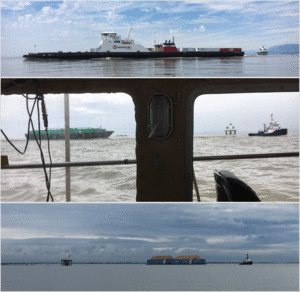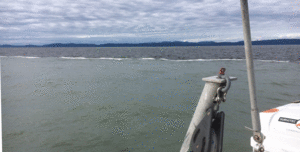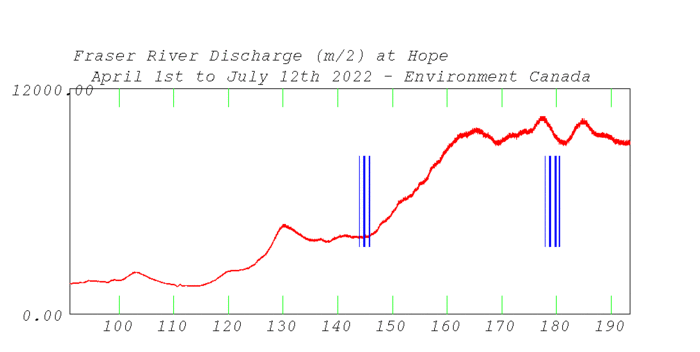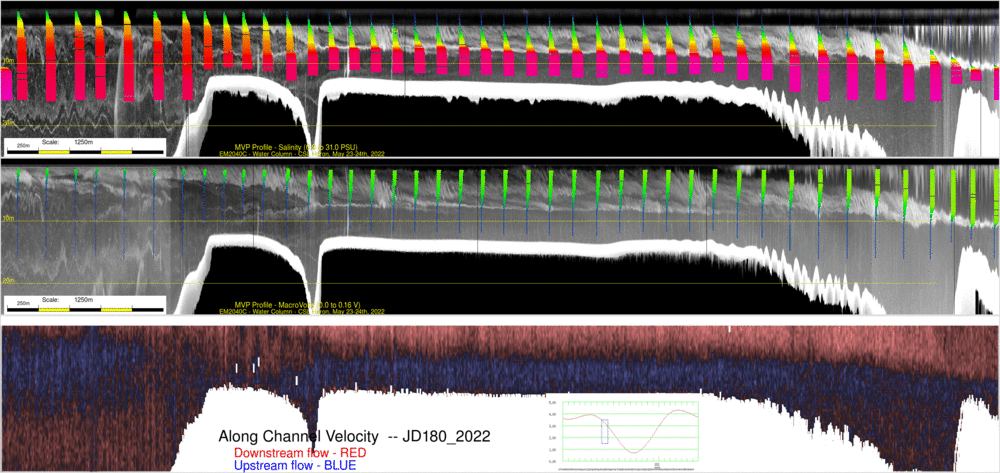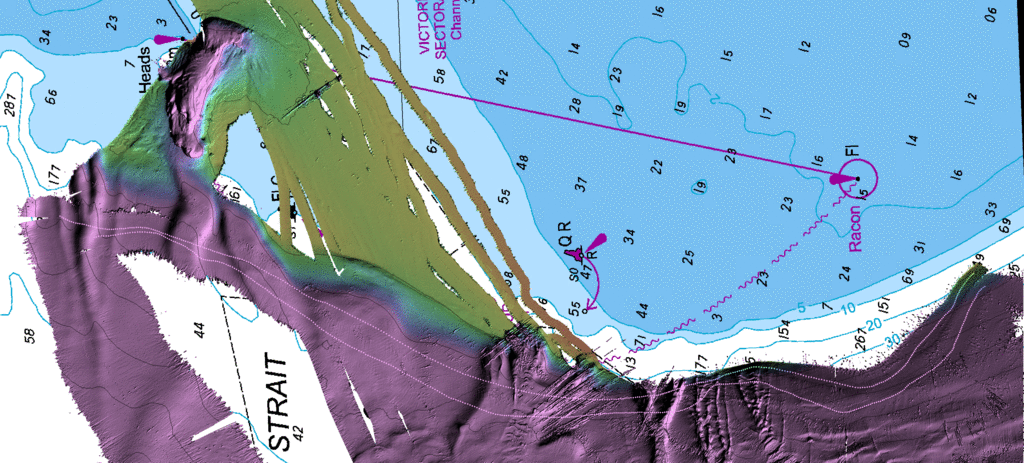Epoch and tidal phase
|
EM712 view (70-100 kHz) -----
EM2040C view (250-350 kHz) ---- ADCP view (600 kHz)
|
JUNE 26th
|
JD 177 A

|

late on flood tide - salt wedge at bend, dropping into scour
depression
|
JUNE 27th.
|
JD178 A

|

late of ebb tide - salt wedge being pushed back toward Sand
Heads
surface outflow at 5-6 knots!
highest suspended sediment levels ever seen occur just
upstream of nose of wedge.
|
JD178 B

|

just after LW - salt wedge arrested just below Sand
Heads
highest suspended sediment levels where freshwater outflow
is able to shear directly against the seabed.
|
JD 178 C

|

just after LW - salt wedge now starting to move upstream,
out of scour hole by Sand Heads
|
JD 178 D

|

mis flood tide - salt wedge halfway up reach and advancing
|
JD 178 E

|

late on rising tide - salt wedge advancing up toward the
bend.
|
JUNE 28th
|
JD 179 A

|

late on falling tide - salt wedge being dragged back down
the reach.
surface outflow at ~ 5 knots.
|
| across mouth section A
performed now. |
JD 179 B

|

just after low water - salt wedge sitting below Sand Heads
in the scour hole
highest suspended sediment levels are in the all fresh water
region - but notably less than the previous day (?).
|
JD 179 C

|

mid flood tide - salt wedge finally advancing again.
|
| across mouth section B
performed now. |
JD 179 D

|

late on rising tide - salt wedge moving back up the channel
toward the bend.
|
JUNE 29th
|
JD 180 A

|

earliest phase of tide sampled - ~ 1 hour after HW - maximum
salt wedge penetration - well past Steveston
|
